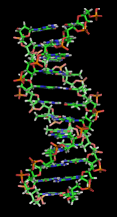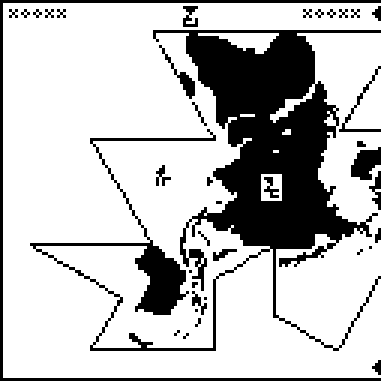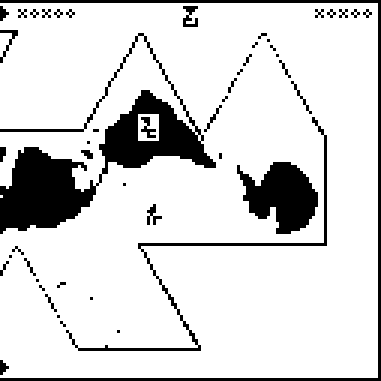Mark Dominus (陶敏修)
mjd@pobox.com

Archive:
| 2025: | JFMAMJ |
| JAS | |
| 2024: | JFMAMJ |
| JASOND | |
| 2023: | JFMAMJ |
| JASOND | |
| 2022: | JFMAMJ |
| JASOND | |
| 2021: | JFMAMJ |
| JASOND | |
| 2020: | JFMAMJ |
| JASOND | |
| 2019: | JFMAMJ |
| JASOND | |
| 2018: | JFMAMJ |
| JASOND | |
| 2017: | JFMAMJ |
| JASOND | |
| 2016: | JFMAMJ |
| JASOND | |
| 2015: | JFMAMJ |
| JASOND | |
| 2014: | JFMAMJ |
| JASOND | |
| 2013: | JFMAMJ |
| JASOND | |
| 2012: | JFMAMJ |
| JASOND | |
| 2011: | JFMAMJ |
| JASOND | |
| 2010: | JFMAMJ |
| JASOND | |
| 2009: | JFMAMJ |
| JASOND | |
| 2008: | JFMAMJ |
| JASOND | |
| 2007: | JFMAMJ |
| JASOND | |
| 2006: | JFMAMJ |
| JASOND | |
| 2005: | OND |
Subtopics:
| Mathematics | 245 |
| Programming | 99 |
| Language | 95 |
| Miscellaneous | 75 |
| Book | 50 |
| Tech | 49 |
| Etymology | 35 |
| Haskell | 33 |
| Oops | 30 |
| Unix | 27 |
| Cosmic Call | 25 |
| Math SE | 25 |
| Law | 22 |
| Physics | 21 |
| Perl | 17 |
| Biology | 16 |
| Brain | 15 |
| Calendar | 15 |
| Food | 15 |
Comments disabled
Fri, 27 Nov 2015
A message to the aliens, part 19/23 (map of the Earth)
Earlier articles: Introduction Common features Page 1 (numerals) Page 2 (arithmetic) Page 3 (exponents) Page 4 (algebra) Page 5 (geometry) Page 6 (chemistry) Page 7 (mass) Page 8 (time and space) Page 9 (physical units) Page 10 (temperature) Page 11 (solar system) Page 12 (Earth-Moon system) Page 13 (days, months, and years) Page 14 (terrain) Page 15 (human anatomy) Page 16 (vital statistics) Page 17 (DNA chemistry) Page 18 (cell respiration and division)
These are pages 19–20 of the Cosmic Call message. An explanation follows.
These two pages are a map of the surface of the Earth. Every other page in the document is surrounded by a one-pixel-wide frame, to separate the page from its neighbors, but the two pages that comprise the map are missing part of their borders to show that the two pages are part of a whole. Assembled correctly, the two pages are surrounded by a single border. The matching sides of the map pages have diamond-shaped registration marks to show how to align the two pages.
The map projection used here is R. Buckminster Fuller's Dymaxion projection, in which the spherical surface of the Earth is first projected onto a regular icosahedron, which is then unfolded into a flat net. This offers a good compromise between directional distortion and size distortion. Each twentieth of the map is distorted only enough to turn it into a triangle, and the interruptions between the triangles can be arranged to occur at uninteresting parts of the map.
Both pages are labeled with
the glyph  for “Earth”.
On each page, the land parts of the map are labeled with
for “Earth”.
On each page, the land parts of the map are labeled with
 and the water parts with
and the water parts with
 , as on
page 14, since the recipients
wouldn't otherwise be able to tell which was which.
, as on
page 14, since the recipients
wouldn't otherwise be able to tell which was which.
[Other articles in category /aliens/dd] permanent link
Mon, 02 Nov 2015
A message to the aliens, part 18/23 (cell respiration and division)
Earlier articles: Introduction Common features Page 1 (numerals) Page 2 (arithmetic) Page 3 (exponents) Page 4 (algebra) Page 5 (geometry) Page 6 (chemistry) Page 7 (mass) Page 8 (time and space) Page 9 (physical units) Page 10 (temperature) Page 11 (solar system) Page 12 (Earth-Moon system) Page 13 (days, months, and years) Page 14 (terrain) Page 15 (human anatomy) Page 16 (vital statistics) Page 17 (DNA chemistry)
This is page 18 of the Cosmic Call message. An explanation follows.

The 10 digits are:
 0 |  1 |  2 |  3 |  4 |  5 |  6 |  7 |  8 |  9 |
This page depicts the best way to fry eggs. The optimal fried egg is shown at left. Ha ha, just kidding. The left half of the page explains cellular respiration. The fried egg is actually a cell, with a DNA molecule in its nucleus. Will the aliens be familiar enough with the structure of DNA to recognize that the highly abbreviated picture of the DNA molecule is related to the nucleobases on the previous page? Perhaps, if their genetic biochemistry is similar to ours, but we really have no reason to think that it is.
 The illustration of the DNA molecule is subtly wrong. It shows a
symmetric molecule. In reality, one of the two grooves between the
strands is about twice as big as the other, as shown at right.
The illustration of the DNA molecule is subtly wrong. It shows a
symmetric molecule. In reality, one of the two grooves between the
strands is about twice as big as the other, as shown at right.
The top formula says that C6H12O6 and
O2 go into the cell; the bottom formula says that CO2 comes
out. (Energy comes out also; I wonder why this wasn't mentioned.)
The notation for chemical compounds here is different from that used
on
page 14: there, O2 was written as

 ;
here it is written as
;
here it is written as


 (“2×O”).
(“2×O”).
The glyph near the left margin  does not appear elsewhere,
but I think it is supposed to mean “cell”. Supposing that is correct,
the text at the bottom says that the number of cells in a man or woman
is !!10^{13}!!. The number of cells in a human is not known, except
very approximately, but !!10^{13}!! is probably the right order of
magnitude. (A
2013 paper from Annals of Human Biology estimates
!!3.72\cdot 10^{13}!!.)
does not appear elsewhere,
but I think it is supposed to mean “cell”. Supposing that is correct,
the text at the bottom says that the number of cells in a man or woman
is !!10^{13}!!. The number of cells in a human is not known, except
very approximately, but !!10^{13}!! is probably the right order of
magnitude. (A
2013 paper from Annals of Human Biology estimates
!!3.72\cdot 10^{13}!!.)
Next to the cell is a ruler labeled !!10^{-5}!! meters, which is a typical size for a eukaryotic cell.
The illustration on the right of the page, annotated with the glyphs
for the four nucleobases from the previous page 


 , depicts the
duplication of genetic material during cellular division. The DNA
molecule splits down the middle like a zipper. The cell then
constructs a new mate for each half of the zipper, and when it
divides, each daughter cell gets one complete zipper.
, depicts the
duplication of genetic material during cellular division. The DNA
molecule splits down the middle like a zipper. The cell then
constructs a new mate for each half of the zipper, and when it
divides, each daughter cell gets one complete zipper.
[Other articles in category /aliens/dd] permanent link







